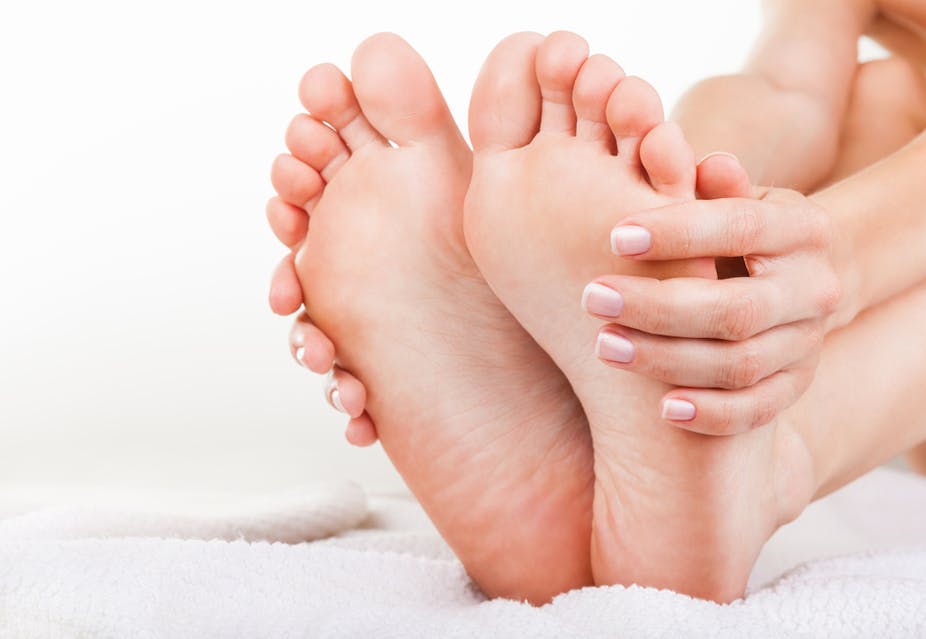The summer sun sees us strip off. And from a podiatrist’s perspective, that’s means the arrival of new footwear, as people ditch boots and trainers for sandals and flip flops. For the past several months, our feet have been hidden away, and in some cases, neglected, but now, most of us want our feet looking and feeling good for summer.
So as an expert in feet, here are my top tips for things you can do to get your feet ready for the summer.
General foot care
When it comes to toe nails, cut straight across – avoid cutting down the sides of the nails as you run the risk of an ingrowing toe nail.
During the winter months our feet can become dry, cracked and form hard skin called callus. A useful approach to combat this is to soak your feet in warm water for about ten minutes and then use a pumice stone or foot file to lightly take the dry skin off. This should be followed by a moisturiser cream applied daily. For those who have particularly dry and callus feet, a cream with the ingredient urea (which can hydrate and regenerate the skin, soothe irritations and soften the top layer of the skin) can be very useful.
If your feet are very dry, you may wish to put on a pair of socks after the application of the cream to increase absorbency. And if you do suffer with callus that is not responding to self-care, or you have corns – concentrated hard areas of skin that occur on the joints of the toes or on the bottom of your forefoot – then you will need to see a registered podiatrist.
If your feet are dry, with a scaly-type of rash or the skin is itchy you may have Athlete’s foot which is a fungal infection. Likewise, if you have thickened and discoloured nails that crumble on cutting, it may also be due to a fungal infection known as onychomycosis. While it is tempting to cover them up with nail varnish don’t – this will only make the problem worse. Again a registered podiatrist can help and there are a number of over-the-counter fungal topical products that a pharmacist can advise you about.
Summer footwear

The less-is-more approach to footwear in the summer has many of us donning sandals and flip flops, the latter of which in particular offers minimal protection and support to the foot and lower limb. Changes to footwear styles and an increase in activity – summer walks in parks and along the beach, for example – can increase the chance of injury to the foot. In the case of flip flops, the separator between the first and second toes can cause all of the toes to claw (curl) during “toe-off” as we walk to keep the flip flop on, since there is little support across the top of the foot. This can increase the stress and forces within the forefoot area and for some individuals, the separator between the first and second toes can cause irritation of the skin resulting in blistering during the early stages of wear.
We advise that individuals stage the use of less supportive footwear such as flip flops and sandals with more supportive footwear – trainers, lace ups.
In addition, where possible, for those who wear sandals, it is advised that a style which incorporates a strap mechanism across the top of the foot be worn. By adopting a staged approach to summer footwear, it can allow the feet to adapt and minimise the risk of problems that could occur within your foot, ankle and lower limb – this can include forefoot pain, heel pain (tendinitis), fractures, strains and sprains.
It is important to note that if you have poor circulation, diabetes and/or a loss of sensation of your feet (neuropathy) you will need to be extra cautious. Remember, everyone needs to protect and care for their feet – looks are important, but pain-free walking in the summer sun is even more essential.

